- Administrator
- Albums and Singles
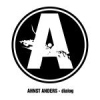 Every once in a while a record comes along that does something a little different with a particular genre– it admittedly doesn't happen very often but when it does it makes me sit up and take notice. Such is the case here with this debut full length disc by German rhythmic industrial dance act Ahnst Anders.
Every once in a while a record comes along that does something a little different with a particular genre– it admittedly doesn't happen very often but when it does it makes me sit up and take notice. Such is the case here with this debut full length disc by German rhythmic industrial dance act Ahnst Anders.
This is one of those rare 'dance' CDs that doesn't make heavy use of voice samples; instead it utilizes field recordings and organic sounds (such as flowing water and movement in an echo-prone corridor for example) and artfully marries them to the electronically-sourced elements into something which is at once very accessible and yet markedly experimental in outlook. This offering, while offering some concessions to the rhythmic industrial/IDM/d'n'b scenes, also looks to other areas of the musical spectrum like ambient/dark ambient and musique concrète, while also showing a willingness to play around with parameters and conceptual frameworks at the same time.
Above all, it is a quiet album. The music, rather than being an overbearing barrage of repetitive beats, is more concerned with seeping into the consciousness subtly and with a minimum of fuss. Sounds and drones hang about in the background almost, interspersed with blips, squeaks, small percussive noises, those organic sounds mentioned above, and the occasional burst of electronic rhythm. The overall effect being to give the impression that this is more of an everyday narrative than a species of beast intended to inspire an exodus to the dancefloor. It's more like the kind of background noise encountered while walking from any suburban home: natural and incidental sounds that normally inhabit the sphere of the consciously ignored simply because they are so familiar and commonplace. Here the sounds are taken out of their natural environment and context, and so elevated into the realm of the exotic and alien, enabling us to once again to look at the world with fresh eyes and to re-acquaint ourselves with it.
The best thing about this is that it goes about accomplishing this mission with a quiet understated self-confidence and self-assurance, as if it is better to introduce the ideas gradually and surreptitiously rather than shout it from the rooftops. Even those tracks that DO feature extended beat workouts, like "Treatment" and "Diskuss," use it as a fully integrated element of the whole and not the be-all and end-all as is so often the case; that in itself marks it out for consideration.
I consider it a pleasant change to listen to an artist who attempts to inject a little difference into a genre that seems to thrive on constant formulaic reiterations, and to change the emphasis from the hallmark beat-driven physicality and metamorphosing it into a more cerebral artefact. Anders has been highly successful here in that respect, carving out something fairly unique and listenable in the process.
Samples:
Read More
- Administrator
- Albums and Singles
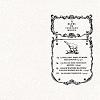 While I feel that their peak is still 2005's masterful Horses in the Sky, this new album's energetic stomp is by no means a disappointment. Whereas that last album was heavily focused on vocal harmonies, here Silver Mt. Zion let their rage flow freely through their instruments. High volume riffs and squeals of feedback come to the fore, a rock monster that has been carefully concealed behind the careful arrangements of earlier releases.
While I feel that their peak is still 2005's masterful Horses in the Sky, this new album's energetic stomp is by no means a disappointment. Whereas that last album was heavily focused on vocal harmonies, here Silver Mt. Zion let their rage flow freely through their instruments. High volume riffs and squeals of feedback come to the fore, a rock monster that has been carefully concealed behind the careful arrangements of earlier releases.
Last year was a busy year for the members of Silver Mt. Zion. They recorded an astounding album and subsequently toured with Vic Chesnutt and performed a special one-off performance with Patti Smith. Along the way their planned live album, Fuck You Drakulas, was abandoned. Indeed, when I asked them about the live album after a Vic Chesnutt show I was deeply disappointed at the news of its cancellation as I knew there were new songs on it waiting to be heard. Sensing my disappointment I was reassured that it's OK, there's a new studio album on its way. So for the last three months I have been giddy waiting for 13 Blues for Thirteen Moons and finally here it is, bearing with it those songs originally on Fuck You Drakulas.
Instead of getting straight into the album, there a dozen very short tracks of feedback roughly playing the melody to the first song, "1,000,000 Died to Make This Sound." The song's title brings back memories of that revelatory moment of turning over the sleeve of Godspeed's Yanqui U.X.O. to reveal the infamous web of bloody association between the major labels and the arms industry. After a quiet and fairly typical Mt. Zion intro, the song suddenly erupts into a tempestuous refrain driven by a pounding guitar and cello assault. The lyrics are a venomous accusation of greed towards the music industry, taking swipes at the majors for their bullish anti-piracy tactics and towards the bland bands who rip off their fans with overpriced merchandise and music empty of sincere feelings ("Silk-screen that, ye twits, across thy Internet").
The quiet side to their music is not totally lost in the clamor; "Black Waters Blowed/Engine Block Blues" and "BlindBlindBlind" are both reminiscent of their more recent albums. The former has all the ups and downs expected from a classic SMZ song and the latter is a tender slow-boiler which explodes in a joyous chorus calling out to the good guys. However, the first time listening to these last two songs was a bit of a drastic comedown after the runaway train energy of the first half of the album. It is with repeated listens that these songs grow and blossom into the beautiful flowers that they are.
Throughout the album, the group continually set themselves apart from the crowd. They address all the pain, fear, sadness and anger conjured that many do not talk about let alone sing about. Their music spills out like a holy fire against the corrupt and the complacent: "There are ones that are liars and ones that don’t know." It is impossible to listen to this album and not feel like going out to take a stand against something that is wrong with the world (a feeling I often get listening to Silver Mt. Zion). As they put it themselves a few years ago, for those of us growing up in a dead, insincere musical wasteland: This is our punk rock. To hear these songs and not be roused is to be dead.
samples:
Read More
- Administrator
- Albums and Singles
Ringer locks together gloriously rich synthesizer arpeggios; 'Wing Body Wing' slips from crisp clusters of disco percussion to Steve Reich polyrhythms; and in between are another two euphoric ripples of sound, 'Ribbons' and 'Swimmer'. These are tracks that make you think of Berlin - Dakar - Detroit - but they could only have been made in London. All four are headphone epics, but are mixed in such a way you know you have to hear them at Plastic People or The End.
The techno heartbeat comes from Kieran Hebden's regular DJ residences over the last couple of years - but also from his ongoing collaborations with legendary jazz drummer Steve Reid. Whether in the studio or live, Kieran and Steve often click into the kind of deep 4/4 grooves that can depart in any direction with a little adjustment.
Ringer carries that minimal pulse over into Four Tet, and while Kieran's trademark recuttings of jazz breaks may be less in evidence, his feel for harmony and melody is, as always, unmistakable.
Tracklisting
1 Ringer
2 Ribbons
3 Swimmer
4 Wing Body Wing
Read More
- Administrator
- Albums and Singles
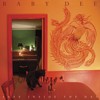 Baby Dee's latest album and her first for Drag City is somewhat of a departure from her previous work in a lot of ways, yet many of the new songs still retain the fragility that made her earlier material so intimate. Backed by a band of admirers that includes Will Oldham, Matt Sweeney, Bill Breeze, John Contreras, and Andrew W.K., her music comes alive like never before.
Baby Dee's latest album and her first for Drag City is somewhat of a departure from her previous work in a lot of ways, yet many of the new songs still retain the fragility that made her earlier material so intimate. Backed by a band of admirers that includes Will Oldham, Matt Sweeney, Bill Breeze, John Contreras, and Andrew W.K., her music comes alive like never before.One of the reasons this album works so well is that Dee's supporting cast never takes the spotlight. Instead, their contributions bring a whole new dimension to songwriting that was already great to begin with. These songs take us through a variety of moods, from the triumph of the title track that opens the album to the somber yet beautiful "You'll Find Your Footing" that closes it. While these pieces and others, like "A Compass of the Light" and "Flowers on the Tracks," are delicate compositions evocative of her earlier work, there are also songs that pulse with a newfound vitality.
"The Earlie King" is striking with its strutting rhythm, Caribbean-influenced bass line, and eerie violin sweeps. Coming across like something spilling out of a cabaret in a dangerous seaport, "The Only Bones That Show" is raucous and buoyant despite opening with the gritty lines: "I'm looking out from eyes that roll back white and I talk in tongues of blood and bite/And the only song I know is the calling of the crow." The enthusiasm is infectious, making this one of the album's standout tracks. Similarly irresistible is "The Dance of Diminishing Possibilities," in which Dee relates a childhood story about neighborhood thugs who demolish a piano yet can't destroy the harp inside it. "Big Titty Bee Girl (From Dino Town)" is an unusually bawdy song about ways to mistreat an albino, amusing lyrics that are further enhanced by Baby Dee's barrelhouse piano.
Besides venturing into new musical styles, Dee also challenges herself as a singer by varying her delivery style from song to song or even within a single track, and her voice has never sounded so confident. There are certainly some dark lyrical passages throughout these songs, but her exuberance and sense of humor provide a good balance. This is a fantastic album that should both thrill old fans and make plenty of new ones.
samples:
Read More
- Administrator
- Albums and Singles
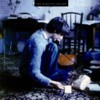 Originally recorded for a radio broadcast, Vini Reilly is joined by Bruce Mitchell on drums for this live set of mostly new material. The concert is a good snapshot of a prolific period in the group's history, and shows another side of some of their better work.
Originally recorded for a radio broadcast, Vini Reilly is joined by Bruce Mitchell on drums for this live set of mostly new material. The concert is a good snapshot of a prolific period in the group's history, and shows another side of some of their better work.Performing in an open-air venue a few months before they would record the second Durutti album LC, this concert finds Reilly and Mitchell playing together somewhat tentatively but the result is still enjoyable. Mitchell's style complements Reilly's quite well, adding a nice complexity to the music. They start out a little sluggishly on their first few songs, including an awkward breakdown in the middle of "Jacqueline" that features a drum solo, but they start clicking on "Sketch for Summer." The seldom-performed "Danny" follows nicely here, with the equally excellent "Stains (Useless Body)" and "The Missing Boy" trailing after. The wild and effects-laden "Self Portrait" strays into abstract territory before closing with the appropriately titled, "For Belgian Friends." At 40 minutes or so, it is a relatively short but satisfying set.
The biggest downside to this disc is the sound quality. The drums in particular are all over the place, with various pieces of the kit sounding like they were recorded in vastly different environments. Reilly's voice is hit or miss and a microphone falls off his amplifier during the performance, which he attributes to the horrendous PA system and substandard sound technicians in the interview that closes the disc.
Still, for a live recording, it doesn't sound terrible either. The nuances of the performance come through fine, and the songs sustain a nice mood throughout . The interview at the end is probably only for the band's strict devotees, but the music more than holds its own even for casual fans.
samples:
Read More
- Administrator
- Albums and Singles
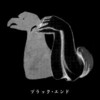 Andrew Liles shuts the door on the Vortex Vault with this final installment which includes contributions from Steven Stapleton, R.K. Faulhaber, and Matt Waldron. It's an atypical entry in the series and one of the most intriguing if only be cause of its spectacular finale.
Andrew Liles shuts the door on the Vortex Vault with this final installment which includes contributions from Steven Stapleton, R.K. Faulhaber, and Matt Waldron. It's an atypical entry in the series and one of the most intriguing if only be cause of its spectacular finale.Stapleton is listed as contributing to the first track, "Ohm," but it's unclear exactly what he does. The atmospherics the song delves into toward the end sound more like his style than does the voice that repeats the title as if in a mantra devoid of mysticism. It's a somewhat disappointing track given the personnel. More amusing is "As On a Dung Hill," in which R.K. Faulhaber lists self-deprecating traits such as "I am filthy/I am riddled with lice/Dogs, when they look at me, vomit/My skin is encrusted with the scabs and scales of leprosy an d covered with yellowish puss." Its playful organ and drums make it one of the more accessible pieces from the entire series and one of its most humorous. Matt Waldron's vocals and distorted guitar provide the backbone for "Kojack Witho ut the Hat," but the song is a little too repetitive without much of a payoff, and its novelty wears off after repeated listens.
While those three songs aren't without their charms, the real jewel is the nearly 40-minute "Kay-Loong-Meu-Tuk," which sprawls haphazardly in continuously cross-fading 8- to 34-second increments over 95 tracks, cycling through a variety of musical styles in the process. Parenthetically subtitled "(The Beginning of the End of the End of the Beginning of the End)," some sections hint at elements that may have been culled from previous Vault material. Yet it's no retread either. Other than the ending passage lifted from the recurring "Anhedonia," I can't pinpoint any specific tracks that may have been used, only general impressions. Either way, this song is wholly its own with high-tension drones, rattling machinery, rushing water, sparkling pianos, and a harrowing choir, among many other elements, that make it such a bizarre cinematic treat.
As an ending to the album and the Vortex Vault itself, this track may not be an echoing boom, but the haunting impression it leaves is no less subtle. It has been a fantastic run, and this sweeping epic seals the Vault shut unforgettably.
samples:
Read More
- Administrator
- Albums and Singles
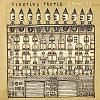 The San Diego band’s sophomore album ticks a lot of boxes. Loud; heavy; and off-kilter time signatures. When they get into it, the music flows remarkably well for such jerky rhythms. However, the longer the album goes on, the more it feels like something is missing. Sleeping People are able to make solid slabs of rock but at times they live up to their name too much as it sometimes feels that they are on autopilot. At the very least their music is fun, the odd rhythms do not sound totally contrived and instead add a bit of spice to what could have been a boring album.
The San Diego band’s sophomore album ticks a lot of boxes. Loud; heavy; and off-kilter time signatures. When they get into it, the music flows remarkably well for such jerky rhythms. However, the longer the album goes on, the more it feels like something is missing. Sleeping People are able to make solid slabs of rock but at times they live up to their name too much as it sometimes feels that they are on autopilot. At the very least their music is fun, the odd rhythms do not sound totally contrived and instead add a bit of spice to what could have been a boring album.
The album starts off strong enough with the very brief but chirpy "Centipede's Dream" before giving way to "James Spader," which to me sounds nothing like the actor but is a good track nonetheless. The highlight of Growing comes near the halfway mark with "Mouth Breeder," which shows the group's best sides, combining quiet and melodic passages with heavier interludes. The piece then boils down to a brooding, dissonant ambience. That this dark and heavy sound is followed by what sounds like a perfect homage to Harmonia's Deluxe album impresses me no end.
If Sleeping People could keep these variations of style and mood throughout then I would be behind them 100%. Unfortunately the second half of the album sounds like they are going through the motions. My interest falls considerably by the time the last piece starts, ironically titled "People Staying Awake." Although the music is not bad, it is not setting my world alight either and I feel that what was a great EP has become a good but patchy album.
At their best, Sleeping People come across as a more melodic Pelican or a less samey Explosions in the Sky. These groups all have a similar appeal although Sleeping People do not seem as comfortable as an instrumental band as much as the others do. The way the instruments are arranged leave a lot of space in the mix. Due to this, many of the pieces sound like they are unfinished instrumentals waiting for the vocalist to put their lyrics over them. This emptiness in the mix spoils a lot of the music for me, the pieces end up sounding unbalanced. A ballsier approach to the production could have filled out the sound better, even my favorite piece "Mouth Breeder" sounds a little impotent at certain points.
Growing is an album let down by its execution rather than by performance. I imagine Sleeping People sound great playing this stuff live but surprisingly given Temporary Residence's releases normally having spectacular productions, this sounds a bit lacking. I would be willing to give them a second chance as there is promise there but as it stands this album will be taken apart and put into an MP3 playlist instead of sitting through the whole thing.
samples:
Read More
- Administrator
- Albums and Singles
 Of the four albums reissued in this series, this is the most recent studio album, originally being released only 12 years ago on Belgium's Les Disques du Crepuscule.
Of the four albums reissued in this series, this is the most recent studio album, originally being released only 12 years ago on Belgium's Les Disques du Crepuscule.
LTM
This reissue features the original ten tracks with the addition of "My Only Love," originally appearing in 1995 on Total Guitar magazine's giveaway cover-mounted CD, included here as a bonus. Here Reilly is occasionally accompanied by the vocals of Elli Rudge, whose sylph-like voice complements Reilly's often dreamily drifting compositions exceptionally well. On this album, more so than the Circuses and Bread, the structure seems to be less rigid even given that his music always seemed to be less reliant on ultra-tight musicianship and more on 'going with the flow.' Here there's an even looser feel to the pieces, despite there also being more of an emphasis on rhythm and the percussive element in addition to the inclusion of a more electronic facet to the instrumentation, even a venturing into dance territory, albeit a laidback Reilly take on what constitutes dance.
Similarly to Circuses and Bread the music here possesses a lazy summery quality, perhaps more akin to a twilit evening in deep August with wind rustling gently through the air and the startling colors of sunset fading airbrush-like into the shades of star-sprinkled night. This is most assuredly an album to be listened to out on a veranda or beach somewhere watching the sun disappear behind a distant horizon while sipping a rum and ice. Once again Reilly's guitar flows liquidly, languidly, and lightly, the notes effortlessly tumbling and dancing around the backing music like fireflies imitating the brief but brilliant passage of shooting-stars in the dusk-laden sky.
The beauty of this music is that it doesn't appear to be in a particular rush to get anywhere or even to the end of the song; it ends when it wants to or feels like it, not when it has to. It all seems to be saying 'Slow down and enjoy being in the moment—and let it gently wash over you....;' moreover it is one of the more peaceful and most heartfelt albums I have had the pleasure to listen to in a while. Tracks like "Remember Me," with its soaring lead guitar shooting into the heavens and piercing the edge of blue to burst arrow-like into the black and become a star, set against Reilly's languidly-delivered vocal-line; "For Suzanne," with its slow-bounce sun-drenched jauntiness, horn section, and joyful electronic melody; the upbeat electro-dance of "Sanko;" the graceful clarinet and diamantine six-string of "Guitar for Mother;" and finally the beautiful "Storm for Steve"—these are what makes this album my fave of the two I have covered.
It has been a wonderful journey of discovery for me listening to this album and Circuses and Bread—and it also emphasised that the best music matures and ages well, the subtle layers and nuances becoming more and more apparent and appreciated as time goes by; moreover the music of The Durutti Column will continue to do so for many years yet I feel.
samples:
Read More
- Administrator
- Albums and Singles
 LTM have recently begun reissuing albums by Vini Reilly's Durutti Column, one of the acts who found a home on the late Tony Wilson's Factory Records. This particular album was originally released in April 1986 on the offshoot Factory Benelux label, a venture between the Manchester label and Les Disques du Crepuscule; this present edition features the original ten tracks in addition to ten bonus pieces, including five culled from various compilations and a further five tracks from the cancelled 1983 album Short Stories for Pauline.
LTM have recently begun reissuing albums by Vini Reilly's Durutti Column, one of the acts who found a home on the late Tony Wilson's Factory Records. This particular album was originally released in April 1986 on the offshoot Factory Benelux label, a venture between the Manchester label and Les Disques du Crepuscule; this present edition features the original ten tracks in addition to ten bonus pieces, including five culled from various compilations and a further five tracks from the cancelled 1983 album Short Stories for Pauline.
LTM
Many years ago I had a good friend who was an absolute nut for the work of Reilly and he tried on numerous occasions to initiate me into the Manchester musician's world. I was quite resistant then, being somewhat young and headstrong, and even though I possessed the grace to at least listen to a few tapes, it didn't float my boat. Two decades later however, as the years have softened my sharp edges, I find myself very much savoring the beauty and musicianship evident on these finely crafted songs and instrumentals.
Vini Reilly has a laidback approach to playing guitar, the notes tripping lightly off the fretboard and floating serenely off into the ether. His arpeggiated six-string figures often acts as the warp to the weft of whatever instrument it is that happens to be accompanying him, whether it be violin, trumpet, piano or whatever, but when he allows his guitar to sing it is like liquid gold, the notes moltenly weaving around both melodies and backing alike. With one or two exceptions, the music here seems to carry with it a lazy summer-like quality, albeit touched with a hint of melancholy and regret, but mostly it feels bright and sunny despite that, light glinting sparklingly and scintillatingly off the multiform facets created by Reilly's fingers and compositional ability and acumen.
This is not to say that it is all brightness and light. Of the tracks which featured on the original release one of the most affecting is "Street Fight," where mournful piano is punctuated by the sound of machinegun-fire and voices—it is a paean perhaps to those who have died on revolutionary streets running with blood—and the delightful single "Tomorrow," Reilly's downbeat vocals heavily pregnant with regret and a tinge of frustration for a love that could have been but was never allowed to flower. Equally downbeat is his version of Hoagy Carmichael's "I Get Along Without You Very Well," featuring the vocals of Wilson's ex-wife Lindsay Reade, which was dedicated to him and issued as a single in 1983, and included here as one of the bonus tracks.
Sitting here as I am on a gray and overcast day the one overwhelming feeling flowing over me is the promise of the summer to come, lazy days spent wasting the hours delightfully doing nothing, a feeling particularly acute when listening to tracks like "Royal Infirmary," "Dance Pt I," and "Blind Elevator Girl (Osaka)," the latter perhaps being my especial favorite. Other tracks to take note of, bonus tracks all, are the quiet viola and reverb-laden guitar soulfulness of "All that Love and Maths Can Do," "The Aftermath," a piece that borders on the very edge of military dirge, the Joy Division–like "A Silence," and the drifting piano and saxophone dreaminess of "Cocktail."
Being re-exposed to the Durutti Column after a lengthy period of twenty years has quite frankly been something of a joyous revelation, and just like a fine wine Reilly’s music, not to speak of my tastes and capacity to appreciate, has matured considerably during those years into something possessing finesse and class. I have no doubt that as his music reaches the ears of a new generation of fans and listeners, those qualities will come to be understood and treasured even more.
samples:
Read More
- Administrator
- Albums and Singles
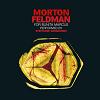 Written for one of the composer's former students, this solemn and fragile piece for piano is played beautifully by Stephane Ginsburgh. The constantly shifting music is like a kaleidoscope; chords change character and fragment into smaller, more discrete fractions before collapsing back into a solid chord again. My description may make it sound frantic but it is delicate beyond description.
Written for one of the composer's former students, this solemn and fragile piece for piano is played beautifully by Stephane Ginsburgh. The constantly shifting music is like a kaleidoscope; chords change character and fragment into smaller, more discrete fractions before collapsing back into a solid chord again. My description may make it sound frantic but it is delicate beyond description.
This bespoke piece was written towards the end of Feldman's life and its quiet, contemplative mood certainly feels autumnal. There is a sense of "What if?" about it; I imagine Feldman thinking about possibilities and might have beens as this piece unfolds. Each strike of the keys is a variant of previous motifs in the piece, like a musical multiverse being played out on a piano. The sustain pedal on the piano is kept firmly down during this piece and this prevents the piece from becoming totally silent between attacks, allowing these alternate universes to bleed into each other (and also adding wonderful dissonances to emerge beneath the surface of the music).
As the piece progresses, permutations and variations explore the different paths that the music could take. More often than not, the music is sombre but from time to time there are bursts of energy which stand out like fireworks in the dark. The subtle variations bring to mind the works of Erik Satie. For Bunita Marcus echoes Satie’s idea of furniture music; music that functions both as music and as audio wallpaper. As so much of Feldman’s piece is so similar, it is easy to switch off and then start paying attention again sometime later without feeling like much was missed. This is not to say that the music is ignorable but more that it blends in seamlessly with the environment.
Ginsburg';s interpretation of For Bunita Marcus follows Feldman's words quoted in the sleeve notes about not pushing the sounds about; the notes are allowed to flow under their own remit like water falling through a sieve. The recording sounds almost ghostly, almost as if there is no pianist at the stool and the piano is singing softly to itself. It is a remarkable recording that complements the rest of Sub Rosa's unfortunately out of print Feldman catalogue. Although it is always wonderful to get a new recording, it would be nice for the label to get around to reissuing some of those previous releases. Feldman often gets overlooked in favour of the more tempestuous stars of the 20th century avant garde which is a damn shame as For Bunita Marcus firmly demonstrates.
samples:
Read More
- Administrator
- Albums and Singles
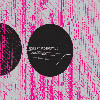 A work purely of modular analog synthesizer, Piotrowicz uses the simplicity of the sonic pallet to his advantage, creating a work that captures both the experimental dissonance of what is colloquy known as "noise" while propping up the entire work on a structure that’s more akin to electro-acoustic composition than the average Merzbow disc.
A work purely of modular analog synthesizer, Piotrowicz uses the simplicity of the sonic pallet to his advantage, creating a work that captures both the experimental dissonance of what is colloquy known as "noise" while propping up the entire work on a structure that’s more akin to electro-acoustic composition than the average Merzbow disc.
There does not seem to be a great deal of treatment or effects used on this album, if any. The color of the sound is that of buzzing ancient oscillators and pre-MIDI technology, without any unnecessary digital sheen or polish. Instead it’s a study of understatement, allowing the subtle tonal shifts from this “primitive” technology to dominate and is a study in textures, not programming or endurance.
The first and third tracks are ones that nudge into the realms of so called noise or power electronics on the push of stuttering sawtooth waves that buzz incessantly. Both tracks are heavily focused on the dense, harsh force of what is a relatively "ugly" sound, yet here it is presented with a significant amount of dynamic and tonal shift that instead of seeking to simply pummel the listener with its overt harshness instead invites closer listening and focus to note these miniscule changes that end up leading to more drastic shifts in the sound over time.
"Clinamen 2A" on the other hand is a much more subtle work, focusing on the subsonic bass frequencies of Piotrowicz’s synth that in its austerity calls to mind the clinical sonic studies of RLW or Bernhard Gunter. While not as akin to pure silence as the latter, the extreme low frequencies give the same sense of wide spaciousness that requires a close listening from the listener to fully absorb the skeletal structures that underlie the piece.
The closing "Clinamen 2B" concludes the album in a functionally appropriate way, combining both the pummeling sawtooth waveforms and complex undercurrent of the previous tracks into a more dynamic, pulsing manner that, just as it reaches an intensity of what could usually be associated with harsh noise it is all stripped away to allow the subtle underpinnings of the track to come forward, nuanced sounds that would otherwise go unheard.
Robert Piotrowicz is definitely an artist to keep an eye on in the realms of the electro-acoustic and experimental genres, though only credited with a few releases thus far, his work has shown quite the ear for both sonic extremity as well as nuanced structure and composition. There's no reason that fans of Francisco Lopez and Lionel Marchetti and their ilk won't love his work just as much.
samples:
Read More

